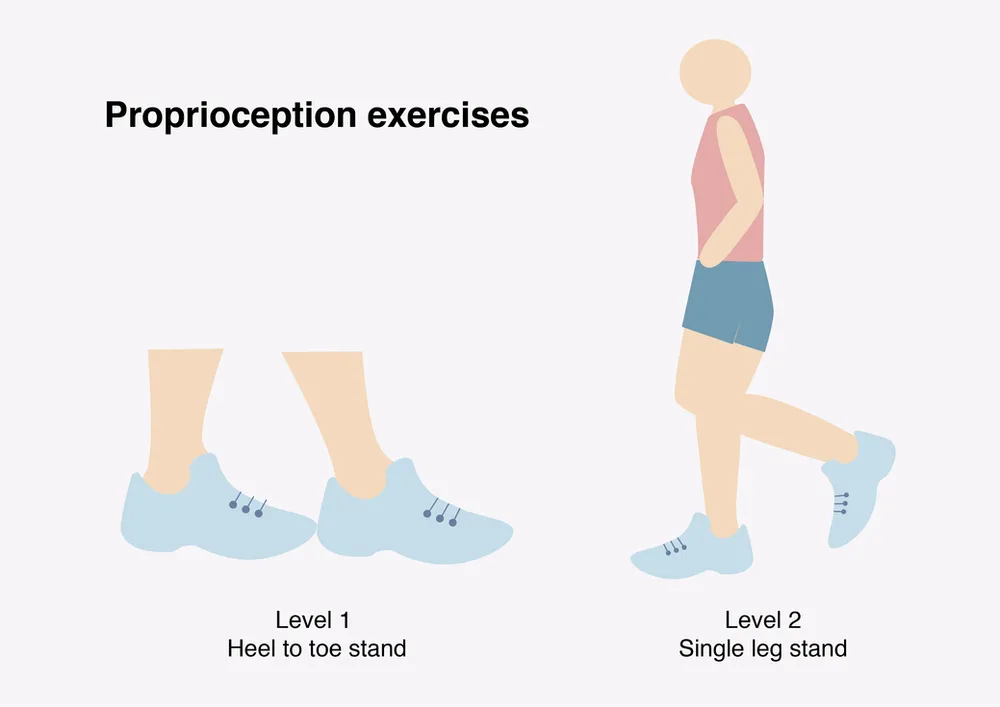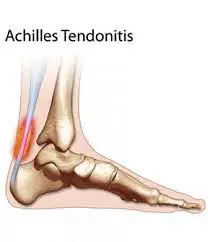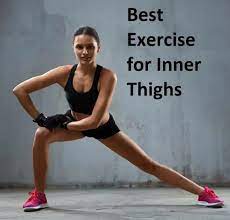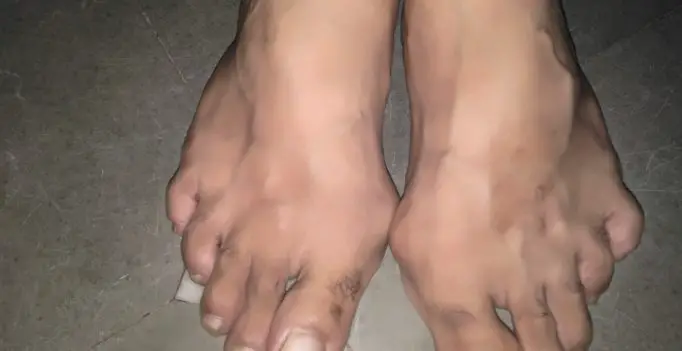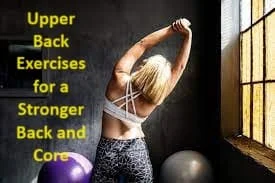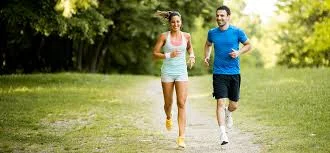15 Best Proprioception Exercises
Proprioceptive exercises aim to challenge and enhance the proprioceptive system, promoting better body control, stability, and coordination. These exercises can benefit individuals of all ages and fitness levels, from athletes looking to improve their performance to individuals recovering from injuries or those seeking to enhance their overall physical well-being.
Kinesthesia, or proprioception, is the capacity to perceive and move one’s bodily parts freely in their surrounding environment. Having this proprioceptive awareness is necessary for daily living and vital for sports performance.
If you have ever seen the difference between grass and cement on the bottom of your feet or felt a grocery bag become weightier as you fill it with apples, you have felt proprioception.
Proprioception may decline as you become older, with injury, or disease, making daily tasks more difficult and also increasing your risk of injury and falling. Thankfully, including these proprioception exercises in your routine will lower your risk of injury and improve your level of fitness.
Proprioception (sense of body positioning in space) is a vital bodily neuromuscular sense. It slips under our “sixth sense”, more generally known as somatosensation. The word somatosensation (or somatosensory senses) is an all-encompassing term that has the sub-categories of mechanoreception (vibration, pressure, discriminatory touch), thermoreception (temperature), nociception (pain), equilibrioception (balance) and proprioception (sense of positioning and movement). Our peripheral nervous system (PNS) is the source of the feedback from all of these additional sensory components, which then feed information to our central nervous system (CNS) for processing at both the spinal cord and cerebral cortex levels.
What is Proprioception?
Proprioception is your body’s capacity to sense its activities, locations, and actions. The main objective is to prevent injury by improving spatial awareness and balance. Proprioceptors, soft tissues, and the neurological system are all closely related in this case.
You may attend people who refer to proprioception as body awareness.
Your muscles, tendons, joints, skin, and inner ear all include proprioceptors, which are scientific sensors found on nerve endings. These sensors provide data relating to changes in direction, position, tension, force, and environment to your brain.
For instance, when you are walking on a dirt path and notice minor changes in the path, such as rocks or holes, you can feel proprioception. Your body adapts to the information gathered by your lower limb proprioceptors to prevent harm, stabilizing your foot and ankle as a result.
In some circumstances, a person may have decreased proprioception from a current or chronic injury, neurological condition, or as a result of aging. Further, intoxication from alcohol or drugs may lower your balance and proprioception.
For those with decreased proprioception from harm or disease, many at-home exercises can assist enhance your balance, spatial awareness, and overall movement. In severe cases, you may require to work with a qualified specialist first.
Types of Proprioceptors
We have a design of receptor nerves, or proprioceptors, found in the muscles, joints, and ligaments. These receptors can feel differences similar to how other receptors watch pressure, sound, heat, and light giving signals to the brain. The brain then transmits a message to the muscles telling them what to accomplish. This can occur so fast that it is, at times, directed as a reflex rather than a response, but there are a few components that make up this action as a whole.
Kinesthetic Awareness
Although proprioception and kinesthetic attention are frequently used collectively, it is important to understand the distinction. Proprioception is an unconscious or subconscious process, whereas kinesthetic attention is an aware effort to respond to the situation. Finally, the brain sends the signal so fast that it is an automated response.
However, the two work jointly to permit a smooth efficient, and safe for everyday movement and sports performance. A great illustration is when a skier operates subconsciously, through proprioception, to remain vertical yet the person’s mind, their kinesthetic awareness, processes what requires to occur to ski over slopes, moguls, around trees, and anything else required to make critical adjustments to the body to act on hand. Proprioception is an internal sense, the central nervous system, while kinesthetic understanding is an external sense, the body in space and time.
Golgi Tendon Organ
Another kind of proprioceptor is the Golgi tendon organ, which supplies information about differences in muscle tension. Collagen fibrils are squeezed tightly during muscle configurations, and this activates the Golgi tendon organ. Because differences in muscle tension will deliver various degrees of pull on the tendon, the Golgi tendon organ supplies details about muscle tension to better help the muscle in acting.
Muscle Spindle
The muscle spindle is also a variety of proprioceptors that delivers communication about changes in muscle length. When the muscle lengthens, the muscle spindle is stretched triggering specific activities within the muscle fibers.
Why is Proprioception important in our life?
Proprioception is important in daily activities and also helps in sports. It allows a person to move quickly while dribbling a ball, such as a football, without looking down or carefully planning each step. A volleyball player can use it to determine the location of the ball in the air before spiking it. Proprioceptive training is still beneficial for experienced athletes. It can help you improve your balance, response time, coordination, and agility, all of which can significantly impact how well you perform in general.
Ultimately, proprioception exercise can reduce your risk of injury. Enhancing proprioception in the muscles, tendons, and joints can help an athlete adapt to fast movements or shifts in balance to prevent common damages and reinjuries like ankle sprains.
How is proprioception related to balance?
The capacity to keep your center of gravity above a base of support is known as balance. Your power to balance comes from three sensory inputs: the vestibular system (movement, equilibrium, and spatial direction), vision (eyesight), and proprioception (touch).
These methods transmit signals to your brain to sort and combine sensory information. The muscles responsible for the action (such as the eyes, neck, arms, trunk, and legs) receive instructions from your brain to support and maintain balance and vision of the environment.
Proprioception is a component of your body’s balancing system that helps you understand where your body is in space, how much force is being applied to it (for example, when you land from a jump), and other information or the assessed force you require to do something, such as pick up a heavy thing.
For the model, being able to detect irregular floors can tell your body to adapt its center of gravity to balance itself. Thus, proprioceptive exercise helps enhance your overall balance.
Ultimately, training your balance and proprioception is vital for lowering your risk of injury and falls while also enhancing your athletic performance.
Balance affects three sensory systems: the vestibular system (movement), vision (sight), and proprioception (contact). Balance is improved by proprioceptive activity, which enables your body to move and remain upright under a variety of circumstances.
Benefits of Proprioception
- Enhances our balance of power
- Creates better control over our limbs and the body in general, resulting in freer motion while running
- Helps avoid damages due to falls, poor condition, efficiency, or foot placement
- Enhances reaction speed, agility, and coordination
- Supports muscles and joints
- Promotes overall athletic performance by polishing running economy, enhancing speed and power
- Improve spatial awareness
- Grow a sense of joint position
Types of Exercises to Enhance Proprioception
Different exercises can be done to assist train your proprioception. It is always most useful to work with a physical therapist or licensed trainer to confirm that you are selecting the right activities to assist improve your expected performance.
Balance and equilibrium-challenging workouts might be beneficial for proprioception results. Balance activities help teach your body and brain to maintain the position of a defective or injured joint. A common illustration of balance training that can help enhance proprioception is the utilization of a balance board. You may require to start grabbing onto the wall until you have achieved a stronger understanding of the planned use of the muscles to balance on the board.
Exercises While Closing the Eyes
As you become more powerful, you can achieve the ability to announce and trust your muscles to perform standing movements with your eyes closed. This improves the contact between the brain and the muscles so that you can complete exercises properly without watching the motion take place.
Strengthening Exercises
Knee-strengthening activities like leg presses, squatting, and lateral moves with the arms are examples of ways that you can help show the relationship between muscle fibers by creating strength. As you build muscle in the forces, the brain starts to understand the appeal of this strength more and more. As strength increases, it improves proprioception awareness in both the mind and body and also enables you to continue/hold an action in place for a longer period while maintaining appropriate form.
Plyometric Movements and Drills
Kinesthetic awareness can be significantly enhanced by plyometric activities that impact coordination and activity patterns. Other exercises that help develop the connection between muscles and nerves include crossover walking, vertical jumps, running figure-eight patterns, and change-of-movement drills. As you are asking the body to achieve certain actions, it teaches the brain to react to these movements. Over time, it becomes easier to perform these activities without much thought as a natural connection evolves into a part of the routine.
Exercises to Enhance your proprioception:
Here we describe home exercises to enhance your proprioception. You might want to be close to a wall or have a partner nearby if you experience balance issues. You can add a wobble board or disc for more difficulty as your balance improves.
One-leg balance test

- To start this exercise you have to Stand with your feet hip-width apart and put hands on your hips.
- Move your weight onto your right foot and raise your left foot a few inches off of the floor.
- Stand in this place for 35 seconds and switch sides. Repeat 5 times on each side.
One-leg 3–way kick
- To complete this activity Put your hands on your hips and stand with your feet hip-width apart.
- Stand on your right leg and raise your left foot in front of you a few inches off of the floor. Take a five-second hold before returning to your starting position.
- Obey the same steps as you raise your left leg to the side of your body and then behind you.
- Switch sides and repeat this 5 times on each side.
Cone pickups
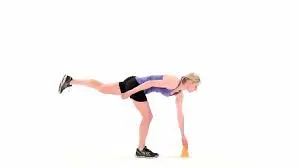
- As you do this exercise, engage your core and utilize your buttocks and hamstrings to support and balance yourself.
- Place a cone two feet (approximately 60 cm) in front of you while standing on one foot with your hands on your hips.
- With power, flex the hips and reach forward to hold the cone. Allow your left leg to stretch backward as you reach.
- Raise yourself back up until you are in the initial position. Then, repeat the action to return the cone to its initial point.
- Switch sides and replicate this 5 times.
Reverse lunge
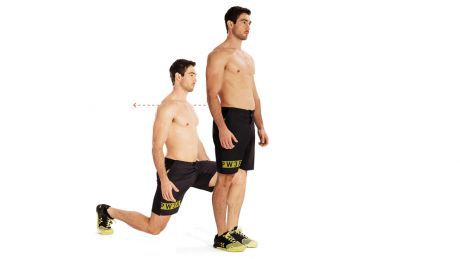
- To complete this exercise you have to Stand with your feet hip-width apart and your hands on your hips. Move your weight to your right foot and take a large step back with your left foot.
- With the ball of your left foot touching the floor and heel up, lower your left leg until your thigh is perpendicular to the floor and your left knee is at a ninety-degree angle. Your right knee should also be flexed 90 degrees.
- Press into your heel and press your glutes to raise your body back to the beginning position.
- Repeat this 10–15 times.
Bird Dog

- Begin on all four limbs with your knees under your hips and your shoulders aligned with your hands. make sure your back and neck are in an impartial position.
- Stretch your right arm forward and your left leg back while leaving your other arm and leg on the floor for support.
- Hold for 5 seconds, then switch the sides.
- Do it 10 to 12 times.
Tree Pose

- To do this exercise you have to Stand with your feet hip-width apart and your hands jointly in front of your chest. Move your weight onto your right foot and raise your left foot off of the floor.
- Flex your left knee outward and place your left foot on your right inner thigh. Alternatively, place it on your right inner calf.
- Keep this position for 20 seconds, or however prolonged you can. Then, switch sides.
Tightrope walk
- draw a straight line about 3–7 feet (1–2 meters) long on the ground. Alternatively, utilize a long piece of yarn or rope.
- Put your hands on your hips as you stand with your feet hip-width apart.
- Put one foot on the line or beside the string. Then, put your other foot straight in front of it as if you are walking a tightrope.
- Walk to the end of the line without footing off to the side. Turn about and walk back.
- Repeat this 5 times.
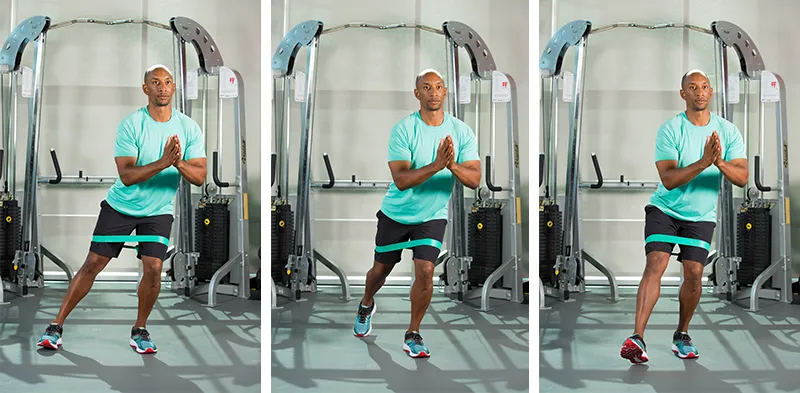
Banded tri-planar toe taps
- For beginners, test this action without the loop band.
- Put a loop band around your foot and with your feet hip-width apart.
- Move your weight to your right foot and lower into a quarter squat.
- Utilizing the loop round as resistance, tap your left toe in front of you, to the side, and back. Do this ten times and switch sides.
Flamingo stand
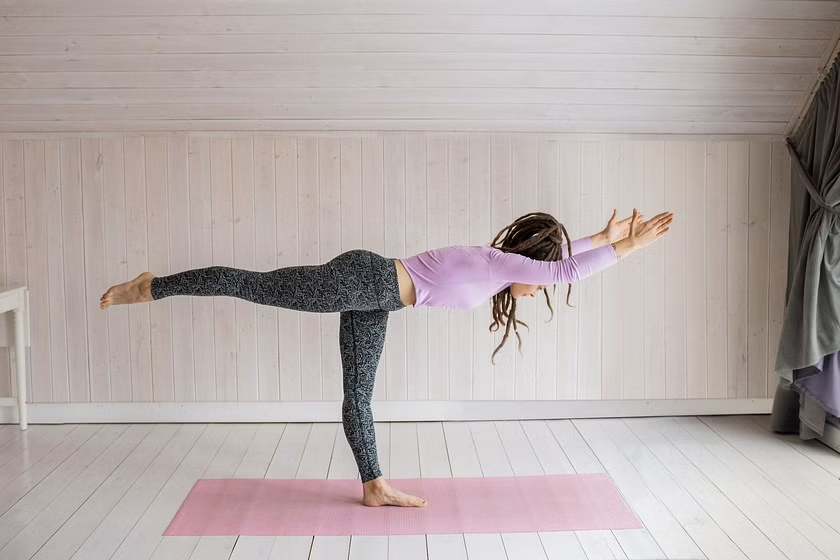
- To perform a flamingo stand Stand with your feet hip-width apart and put your hands on your hips. For more stability, extend your arms out to your sides.
- Move your weight to your right foot and raise your left leg with a ninety–degree flex at the knee.
- Keep this for 20 seconds, or however long you can. Then, switch sides.
Sumo squat to one leg

- Stand with your feet just more than shoulder-width apart and turned out at a 50-degree angle.
- Hinge your hips and flex your knees to drop into a sumo squat. Stand sure to keep your core close.
- As you raise, shift your weight onto your right foot and explode upward to raise your left leg off of the floor to the side. For an added challenge, hold your left leg up and pulse three times.
- Return to the initial position. Do this 10–12 times before switching sides.
Eyes Open and Closed for Single Leg Balance
- This is likely the multiple straightforward proprioception training for runners we will look at today.
- Stand on a single leg, always maintaining your knee slightly flexed.
- Maintain this position for 40 seconds, staying as steady as possible.
- Switch the legs. do 3 times on each leg.
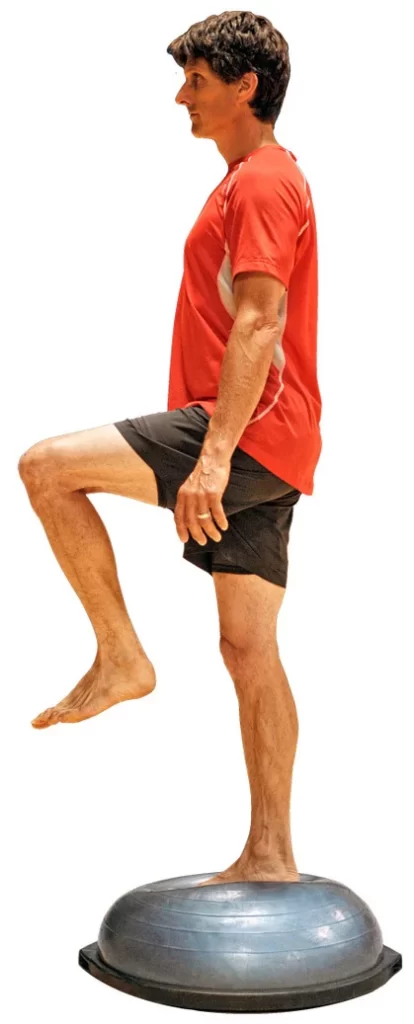
Single Leg Balance With Ball
- To do this exercise, you require someone to toss a ball at you, or you could do it yourself by pitching it against a wall.
- Stand on a single leg, always maintaining your knee slightly bent.
- Maintain this position for 1 minute.
- When maintaining the position, have someone throw a ball at you that you require to catch without failing your balance.
- Switch legs and repeat on the different side.
Single Leg Balance on a Balance Bubble
- Repeat the one-leg balance instructions, but this time step on a balance bubble or another uneven surface.
- You can even try shutting your eyes when this evolves easily or have someone throw a ball at you.
Balance Board Stability Stand
- On an equilibrium board, easily try to maintain your balance by not allowing the sides of the board to touch the ground.
- You will need to constantly adjust your placement, which will do your stability to the maximum.
Bosu Ball Squats
- put the Bosu Ball on the ground, flat side facing up.
- Step onto the ball with your feet just wider than hip-width apart.
- constrict your core, maintain your chest up, and look ahead.
- flexed at the knees and hips as you sit back until your thighs are parallel to the ground.
- Using your glutes, push yourself back up into your beginning standing position.
- begin by repeating for three sets of 10 repetitions, and work your way up to 10-15 repetitions.
Precautionary Notes
- It is consistently necessary to pursue expert training support whenever feasible.
- Perform with a fitness skilled or physical therapist with these types of activities as they will be able to individualize a schedule for your specific requirements, whether the elderly want to achieve a better sense of balance and basic day-to-day processes or an athlete wants to improve implementation and prevent injuries.
Summary
Proprioceptive exercises are designed to improve our body’s ability to sense and respond to its position, movement, and orientation. The proprioceptive system relies on specialized receptors in our muscles, tendons, joints, and skin to provide constant feedback to the brain. By engaging in proprioceptive exercises, we can enhance our body control, stability, coordination, and overall physical performance.
These exercises often involve balance training, coordination drills, and specific movements that challenge our proprioceptive abilities. Incorporating proprioceptive exercises into our fitness routines or rehabilitation programs can lead to increased proprioceptive acuity, reduced risk of injuries, and improved movement efficiency. It’s important to start at an appropriate level and gradually progress, seeking guidance from professionals if needed.
FAQs
Which is the most useful way to challenge proprioception?
Proprioception restoration often contains:
Balance activities.
Tai Chi helps to improve lower limb proprioception, while Yoga, improves your balance and muscle strength.
somatosensory stimulus training, such as vibration therapy, and different textures.
Joint repositioning exercise (joint matching tasks).
How exercise can enhance a person’s proprioception?
Exercises that test balance and equilibrium are beneficial for developing proprioception. Balance workouts help prepare your body and brain to control the work of a deficient or injured joint.
What is the goal of proprioception activities?
Proprioceptive activities are exercises that challenge and develop proprioceptive receptors. Proprioception allows to stabilize a joint during static and dynamic operational tasks. Reduced proprioception can lead to an improved risk of injury
Which thing encourages proprioception?
It is stimulated every moment we move. Every time we operate our muscles or stretch and flex our joints. Receptors for this purpose are all over our body, deep within our joints and muscles. Therefore, whenever we push, pull, or raise heavy things we stimulate this sense.
Which nerve is used for proprioception?
Proprioception of the head stems from the muscles originating by the trigeminal nerve, where the known somatic afferent fibers pass without synapsing in the trigeminal ganglion (first-order sensory neuron), getting the mesencephalic tract and the mesencephalic nucleus of the trigeminal nerve.
Which two systems are necessary for preserving balance and proprioception?
Three systems in the human body act to keep a stable orientation and the sense of being well-balanced. These three systems are the vestibular (inner ear), proprioceptive (sensory nerves), and visual systems.
What are the benefits of proprioceptive exercises?
This will provide us with a feeling of body awareness and detects/manages force and pressure. As proprioceptive input can aid in controlling responses to sensory stimuli, the proprioceptive architecture also plays a crucial regulatory role in sensory processing.
What generates a loss of proprioception?
Because of a variety of age-related physiological changes to the nerves, joints, and muscles, proprioception loss is more likely to occur as we become older. Examples of damages and conditions that can generate proprioceptive deficits include brain trauma, herniated disc.
Does stretching improve proprioception?
In either circumstance, you are triggering muscles, and since muscle activation and connective tissue, lengthening are both a part of the mechanism of proprioception, yes, active stretching can help enhance proprioception.
Is proprioception motor or sensory?
sensory
Every level of the central nervous system gets proprioception, which provides a special sensory component to enhance motor control.

